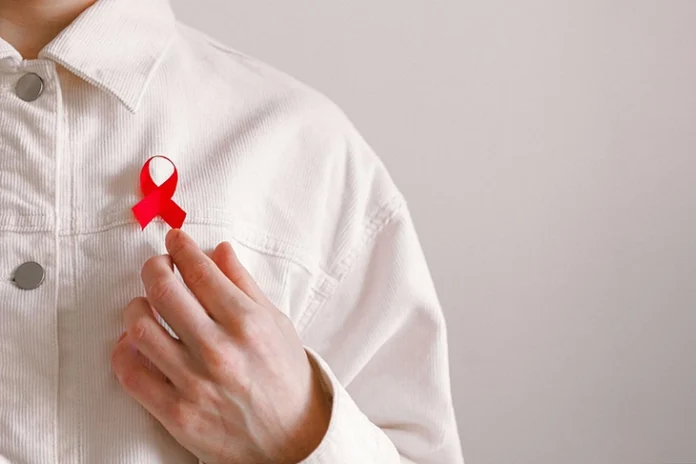
In a stunning turn of events, the closure of One Heartland, a renowned summer camp for HIV-positive children, marks a bittersweet triumph in the battle against HIV/AIDS. What once stood as a vital refuge for children facing the emotional toll of the virus is now no longer needed, as dramatic advancements in medical care have virtually wiped out the need for such a facility.
Nestled on a serene 80-acre property in northern Minnesota, complete with a lake, river, docks, and cabins, One Heartland’s closure is a testament to the extraordinary progress made in the fight against HIV. While the camp will be shuttered, its legacy remains: the perinatal transmission of HIV—when a child contracts the virus during pregnancy or breastfeeding—has dropped to below 1% in the U.S. thanks to the groundbreaking use of antiretroviral drugs.
HIV infections in children globally have plummeted by 38% since 2015. This rapid decline in new cases is a clear signal that One Heartland’s core mission is no longer as urgent as it once was. But the camp’s closure is not without its emotional cost—many feel the loss deeply, as it represented one of the few spaces where children living with HIV could be truly themselves, free from judgment.
Founded in 1993 by Neil Willenson, a young college student who initially aspired to be an actor, One Heartland began as a modest effort to address a growing crisis. After reading about a 5-year-old child in Milwaukee living with HIV and enduring isolation, Willenson was struck by the desperate need for a safe space for these children. What started as a short-term project for Willenson quickly became a life mission. “The impact was so transformative the first summer in 1993 that during the week the children were already saying ‘When can we come back?’” Willenson shared in an interview with the Minnesota Star Tribune.
Initially, Willenson had to rent campgrounds, but after being repeatedly turned away by owners citing health concerns, he was determined to create something permanent. With a little help from major donors, including former Minnesota Twins player Paul Molitor, Willenson purchased the Willow River property in northern Minnesota and transformed it into a sanctuary for HIV-positive youth from across the country.
This was not just a camp; it was a lifeline. “We wanted to create a safe haven where children affected by the disease, perhaps for the first time in their young lives, could speak openly about it and be in an environment of unconditional love and acceptance,” Willenson explained. The camp became the heart of a community, where young people could break free from the stigma and isolation of their condition, forming bonds and experiencing a sense of belonging they could not find elsewhere.
Over the years, thousands of children from across the United States came to Willow River, referred by the National Institutes of Health (NIH) and supported by generous donors. For many, it was a life-changing experience. But now, with HIV transmission rates so low and treatments so effective, the camp’s original mission is essentially complete.
Incredibly, the closure of One Heartland is being seen as a success in the fight against the disease. As Minnesota Star Tribune’s Jana Hollingsworth put it, “That there’s no longer a need for the camp’s original purpose ‘is the greatest story that I ever could have imagined, it’s something I never could have predicted.’”
While this closure represents a monumental shift in the world of HIV/AIDS, it also raises critical questions about the need for specialized spaces for marginalized groups. As one of the last remaining programs dedicated solely to HIV-positive children, One Heartland’s end signals that the stigma and isolation once so prevalent are now vastly diminished. The ongoing commitment of activists and medical professionals continues to chip away at the barriers that once defined the lives of those living with HIV.
But there are still challenges ahead. The fight against HIV may be far from over globally, with many areas still struggling with transmission rates and limited access to care. Yet the dramatic decline in new HIV infections among children is nothing short of revolutionary. The fact that One Heartland was able to close its doors as a result of progress in medical science—and not a lack of compassion or funding—speaks volumes about the tireless efforts of advocates and researchers worldwide.
Willenson, reflecting on the unexpected end to his three-decade-long journey, expressed a profound sense of satisfaction, acknowledging the camp’s role in bringing about a brighter future. “It’s something I never could have predicted,” he said.
As the sun sets over the now-quiet campgrounds of One Heartland, the fight against HIV continues in other corners of the world. But for those who spent their summers at Willow River, the memory of a space where they were cherished for exactly who they were will remain a shining example of what unconditional love and medical progress can achieve.
The world has changed, and with it, the needs of the HIV-positive community. While One Heartland’s closure signals the end of an era, it is also a celebration of how far we’ve come in the fight against this devastating disease. And yet, we must remain vigilant, remembering the children, families, and communities still affected by HIV worldwide.
What are your thoughts? Please comment below and share this news!
True Activist / Report a typo

